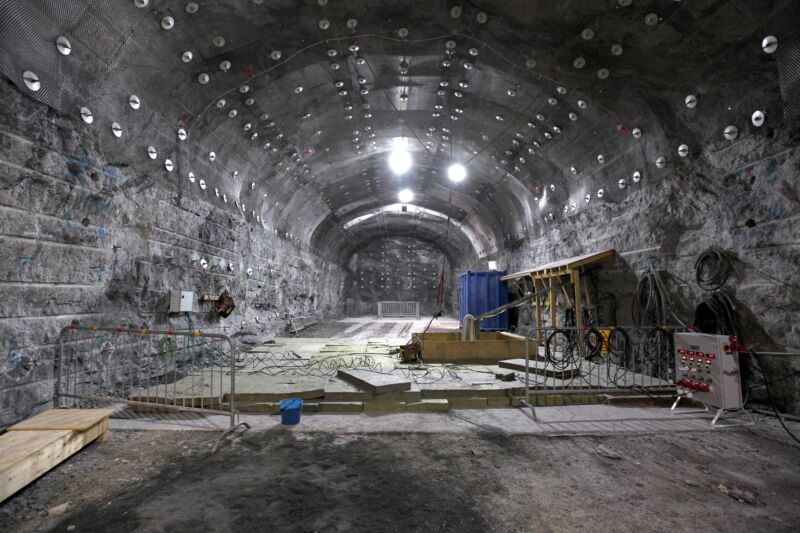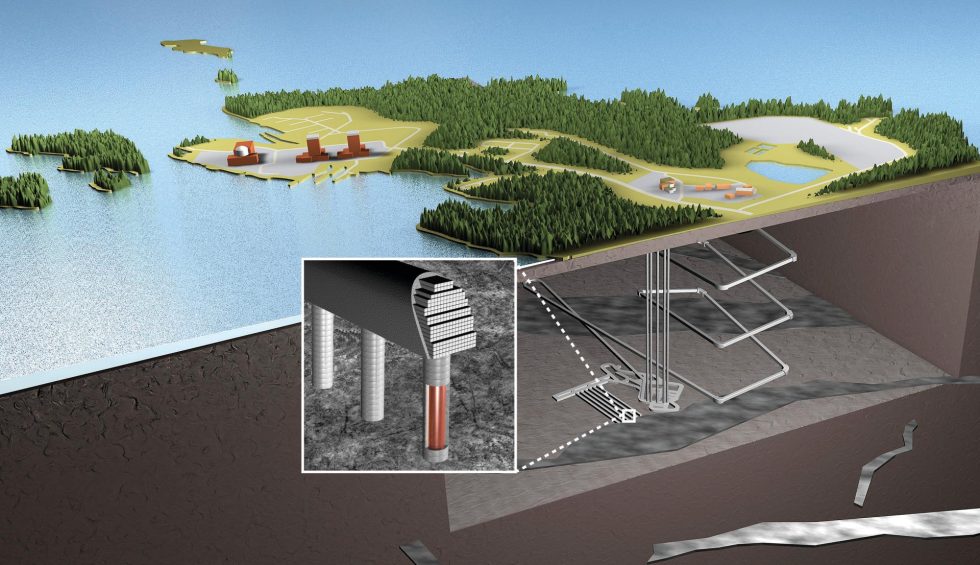
Even if all nuclear power plants were shut down today, there’s a mountain of radioactive waste waiting to be disposed of. Yet only Finland has an approved solution for nuclear waste disposal, while projects in the US, UK, and Germany have failed for decades, and progress is also slow in other countries. With growing calls to extend the life of existing nuclear power stations and build new ones, that mountain of radioactive waste sitting in temporary, vulnerable, and expensive storage will keep growing.
The challenge is daunting. “High-level” nuclear waste, which includes spent nuclear fuel, stays radioactive for hundreds of millennia, so a waste facility must keep it safely away from aquifers, violent weather, war, plane crashes, sea level rise, future ice sheets, volcanic activity, and even curious future humans for a time span that dwarfs all of previous human history.
Ultimately, it’s the geology of a proposed disposal site that determines if it's a safe place to entrust nuclear waste for millennia. We talked to people involved in the Finnish, US, and UK programs about what investigations of the rock and groundwater at those sites revealed about their suitability—or lack thereof.
Burial is best
Worldwide, the consensus is that deep underground disposal is the best way to keep nuclear waste away from water sources and the food chain until its radioactivity has decayed to the normal background.
Radioactive garbage from medical, research, and nuclear facilities, classified as “low-level” or “intermediate-level” waste, is not the problem. This includes things like disposable shoe covers, rags, filters, swabs, syringes, medical radiotherapy sources, and debris from decommissioned nuclear plants, and it is routinely packed into special containers and buried in dedicated shallow landfills.
The real problem is spent nuclear fuel and nuclear reprocessing waste that is classified as "high-level." It is lethally radioactive and physically hot, and it takes several hundred thousand years for its radioactivity to decline to about the level of natural uranium ore.
The right stuff
Under current disposal plans, this radioactive waste will be sealed in a "multibarrier" system—a series of canisters within canisters, engineered to contain the waste for hundreds of millennia, even if some of the layers fail. The canisters will eventually leak, but if all goes to plan, that will only happen in the distant future, after the radioactive isotopes have mostly decayed.
The canisters will be entombed for millennia in tunnels deep underground, and the space around them will be packed with another barrier in the form of a clay called bentonite, which is impermeable and swells into gaps when it’s wet, sealing off the canisters and giving some support against any collapse of the tunnels.
The rock housing the repository acts as a final barrier.
Its job is to protect the waste canisters and the bentonite so they can do their job. It also serves as the last line of defense when canisters eventually leak or fail sooner than expected. As such, the rock must keep the flow of waste from reaching the biosphere for as long as possible—a million years in Finland’s design. To be the “right stuff” for that job, the rock must be strong enough for tunnels to stay intact, it must be effectively impermeable, and its groundwater must have minimal flow and cannot be corrosive.
Finland has a lot of hard crystalline bedrock and many places that are potentially suitable for a repository. The country eventually chose an island on the Baltic coast for its Onkalo repository, and it hopes to seal off the first tunnel of nuclear waste sometime around 2025.
“I'm not saying that there is something special in the Onkalo geology," said Antti Mustonen, research manager with Posiva, the organization in charge of the Finnish repository. "It meets the requirements.”



3175x175(CURRENT).thumb.jpg.b05acc060982b36f5891ba728e6d953c.jpg)

Recommended Comments
There are no comments to display.
Join the conversation
You can post now and register later. If you have an account, sign in now to post with your account.
Note: Your post will require moderator approval before it will be visible.